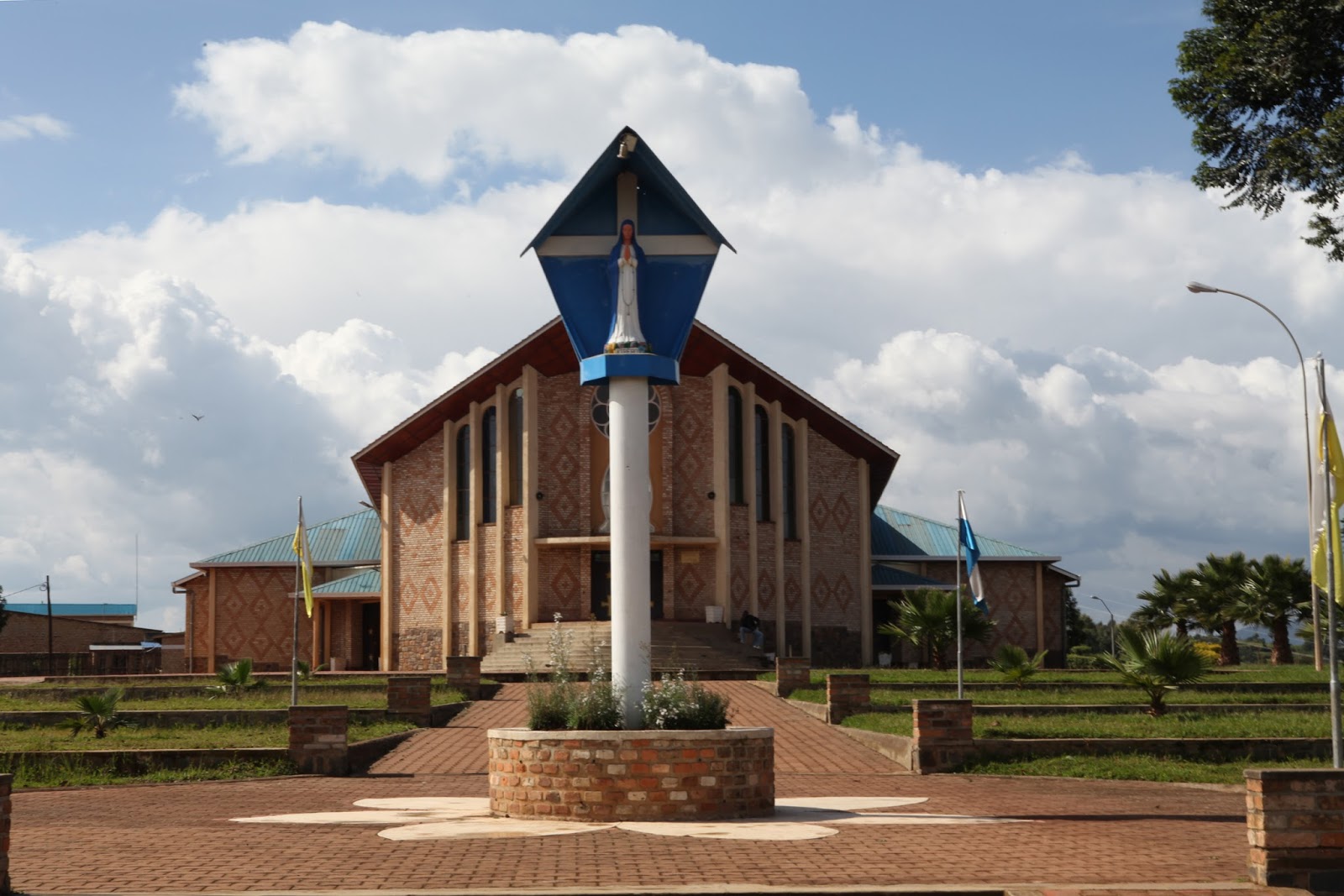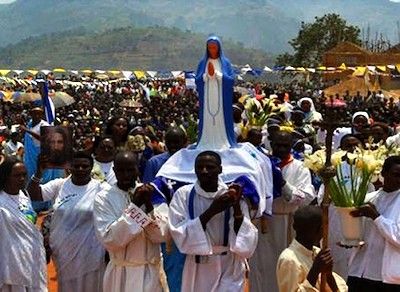
In the heart of Africa, the Sanctuary of Our Lady of Sorrows of Kibeho stands as an important center of devotion and spirituality for thousands of Christian pilgrims. Located in Rwanda, this sanctuary is the only one in the African continent officially recognized by the Catholic Church for the apparitions of the Virgin Mary between 1981 and 1989.
This article explores the history and profound spiritual significance of Kibeho, its messages of peace and reconciliation, and what makes it a pilgrimage destination for believers from all over the world. Join us in discovering more about this special place of faith.
In 1981, in the small town of Kibeho, Rwanda, Marian apparitions began that would transform this place into a major destination for any Christian pilgrimage agency. The Virgin Mary appeared before a group of young students in a context of political and social tension.
Through the accounts of the visionaries, the Virgin conveyed messages of prayer, conversion, and reconciliation, similar to the messages of other Marian sanctuaries like Medjugorje. Thus, dozens of faithful come to this place to experience an unforgettable spiritual journey.
The Kibeho apparitions began in 1981 when three students claimed to have seen the Virgin Mary.
Alphonsine Mumureke, one of the visionaries, was the first to experience the apparition, followed by Nathalie Mukamazimpaka and Marie-Claire Mukangango. Amidst poverty and social struggles, the young visionaries reported seeing and hearing the Virgin, who spoke to them about the importance of faith, prayer, and repentance.
The messages of Kibeho were direct and profound. As in other pilgrimage sites, the emphasis was placed on the need for spiritual conversion and returning to God.
The Virgin warned of the suffering that could come if reconciliation was not sought. These messages resonated deeply in the hearts of the community and believers worldwide, who sought spiritual guidance in difficult times.
The messages transmitted by the Virgin in Kibeho were clear: prayer, conversion, and reconciliation. This last aspect was especially significant in a country that years later would face one of the most painful episodes in its history, the 1994 genocide.
The Virgin, also known as the “Mother of the Word,” urged believers to live in peace and seek reconciliation among people.
As in Garabandal, the messages of Kibeho invited believers to a deep inner transformation and a life of prayer. The importance of repentance and conversion was highlighted, a universal call that remains relevant today.
Each message of Our Lady of Kibeho was delivered with love and urgency, leaving a lasting impact on the local community and visitors to the sanctuary.
The process of recognizing the apparitions was extensive and meticulous. For years, the Catholic Church studied the testimonies of the visionaries and the phenomena surrounding the apparitions.
In 2001, the Bishop of Gikongoro, Rwanda, officially declared the authenticity of the apparitions, making it the first Marian sanctuary in Africa recognized by the Church. This recognition not only strengthened the faith of believers but also legitimized the spiritual experiences of the visionaries and those who visited Kibeho.
As in other historically significant sites, like the Wailing Wall, the Church’s recognition marked a milestone that established Kibeho as a unique and significant pilgrimage destination.
Kibeho is not just a place of apparitions but a space of deep spirituality and conversion. Every year, pilgrims from all over the world visit this African sanctuary seeking peace and answers to their spiritual concerns. As in the Holy Land, pilgrims find here an opportunity to reconnect with their faith and experience inner transformation.

Over the years, this place has grown in importance as a center of devotion and spiritual change. Pilgrims arriving at the sanctuary often feel called to deepen their faith and pursue personal conversion. The Virgin, through her messages, has inspired thousands to embrace a life of prayer and to move away from attitudes that distance them from God.
The impact of spirituality manifests in visitors’ lives, as they find in this place an atmosphere of contemplation and reflection. For many, the experience in Kibeho allows them to reassess their relationship with God and commit more deeply to their Christian faith.
Planning a pilgrimage to Kibeho can be a deeply transformative experience, but it is important to consider several aspects to ensure a smooth and enriching journey.

The most significant date is November 28, when the Feast of Our Lady of Kibeho is commemorated. This day marks the first apparition of the Virgin in 1981, and every year, thousands of pilgrims gather to honor her by participating in processions, solemn masses, and acts of prayer. The atmosphere of faith and community makes this date a special moment for all attendees.
Besides the November feast, Holy Week is another important celebration in Kibeho. During this time, pilgrims take part in sanctuary activities, especially on the Way of the Cross, where Christ’s Passion is remembered through the stations.
On other significant liturgical dates, such as Christmas and Pentecost, the sanctuary organizes special events, including masses, vigils, and moments of adoration, allowing pilgrims to deepen their faith.
Spiritual preparation is key to making the most of this visit, allowing the pilgrim to be open to the peace and reconciliation that this sacred place offers, where the Virgin Mary conveyed a message of love and conversion.
Many pilgrims choose to make a confession before their journey, ensuring they begin their pilgrimage with a clean heart, ready to receive the graces the sanctuary may offer them.

The apparitions of the Virgin in Kibeho, which included messages of peace, repentance, and reconciliation, strongly resonated in a country marked by ethnic divisions. Her message invited Rwandans to look beyond differences, to forgive, and to work together for peace.
After the genocide, during which Rwanda experienced an unprecedented tragedy, the Kibeho sanctuary became a symbol of hope and healing. The Virgin had warned about the importance of reconciliation and unity, and her message was embraced by many as a spiritual guide during the darkest times.
For Rwandans, it represents not only a place of devotion but also a reminder of the need to overcome hatred and violence through love and forgiveness. The influence of Kibeho has extended beyond the borders of Rwanda, reaching people worldwide who seek inspiration to live in peace.
Stay Connected with WayHoly
Discover your perfect pilgrimage and be the first to know about new journeys. By subscribing to our newsletter, you’ll receive the latest updates on pilgrimages, exclusive offers, and spiritual resources to enrich your faith journey.
Don’t miss the opportunity to deepen your connection with God and lead others on their path to spiritual renewal. Join us today and become an instrument of His Will through WayHoly!
“To upload your pilgrimage, please choose one of our plans and create an account, or log in if you’re already a member. Join us in guiding others on their spiritual journey.”